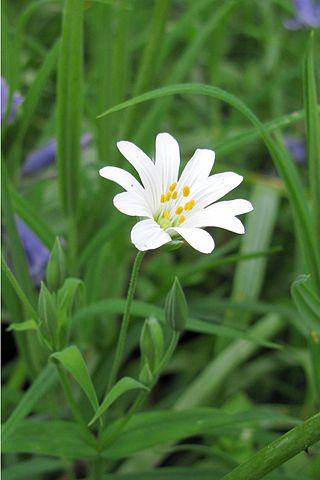
What You Should Know About Controlling Chickweed
Chickweed is a tough annual weed whose seeds often sprout in fall and thrive throughout the winter season. The weed is also known as satin flower or even starwort. Most people do find it extremely strange to control this weed in the winter. But again, you can't just watch it thrive at the expense of your crops.
Its growth is normally overlooked in the fall only to be realized in the spring and winter. And the worst part of its realization at such a time is that it will have already disbursed seeds for the next season. You will actually have nothing to do about this weed as its days to live will be countable.
Now, are there ways through which this stubborn weed can be controlled? Well, that is what we want to explore right now. Read along as we unravel the mystery behind chickweed.
What do we need to know about chickweed?
Well, chickweed is known as Stellaria media in the field of botany. It is a weed that thrives mostly during the cool seasons. You can identify it through its small but succulent leaves that are white but with small flowers together with its shortness in dense mats.
This weed thrives in any condition regardless of soil type. It grows the entire season with its growth undergoing the full cycle up to the point where its seeds germinate again. Can you imagine that all these are possible just within a lifespan of less than five weeks?
Why it features among the most difficult weeds to control is because of the way it produces many seeds. One plant can produce close to 1000 seeds! To make it even worse, it has the capabilities of spreading even from the new roots that might emerge nodes on the plant's stems. What a hardy and extremely prolific weed this is?
How to control chickweed
There are two broad categories of ways that you can use to control this weed. These are pre-emergent and post-emergent ways.
Pre-emergent Control Measures
Basically, the pre-emergent measures are just ways of ensuring that the seeds are kept from germinating. Some herbicides can do the work perfectly well, but some care should be taken in the process.
Some of the well-known pre-emergent herbicides that you can consider are bensulide, pendimethalin, and benefin+trifluralin. Make sure you follow the manufacturer's directions very keenly especially when working on a newly seeded yard or a yard that is likely to be overseeded soon.
Post-emergent Control Measures
Take a case like now that we are already in winter; it really becomes difficult to apply pre-emergent measures. Chickweed, just like other winter annual weeds, is already in the process of growing. Under such circumstances, only post-emergent control ways can work. Here are some further subcategories of the post-emergent control measures.
1. Manual uprooting
Various solutions can be used to control this weed naturally and safely: Firstly, is the manual pulling out of the weed before flowering and eventually seeding. This weed is shallow rooted and does not require much effort in its removal. You can even use a weed wacker to get rid of them at their early stages of growth.
2. Thorough raking and mowing
You can as well rake vigorously the already matted weeds in the spring for purposes of raising the runners before using a lawn mower to mow the lawn. It will be much easier to pull out the weeds.
3. Isolation and natural killing
Additionally, you can isolate the weeds or even use natural weed killers such as non-selective herbicides, vinegar solution or boiling water in scenarios where the damage to your turf has gone to the acceptable limits.
4. Using special herbicides
Another great way to kill the weeds is using herbicides containing dicamba, mecoprop, 4-D and 2 among others. You can apply them anytime so long as it is in the winter. They work best when temperatures are higher than 50 degrees Celsius.
We have just mentioned the chemicals responsible rather than brands since the chemicals are always the same from brand to brand. The only thing you will be needed to do is confirm with the ingredients if any of these chemicals are available and you will be ready to eliminate the weed.
What about other measures of weed elimination?
Remember that any other measures apart from the use of herbicides will not eliminate the chickweed in entirety. And these chemicals should be applied very cautiously with the manufacturer's instructions well adhered to.
Once you have applied the necessary chemicals, make sure you water your yard every day for 2 to 3 weeks so that any chickweed that could have been left behind is denied growth by only allowing new grass to do the replacement.
How to live with chickweed
You might be wondering what the heck am talking about. Yes, you can as well decide to eat the humble pie and do with this stubborn weed. The presence of chickweed in your yard should not mean the end of life for you.
You can establish the levels to which the presence of the weed in your farm will be unbearable. A healthy yard will withstand a given amount of this weed without being injurious to your crops or your lawn's aesthetic value.
This weed also has some value for which you can consider it for. It is actually a good forage vegetable for most of your animals such as cows, pet birds and chickens, horses, rabbits, and pigs. So if you have any of these animals on your farm, consider bearing the presence of this weed if you find it hard to control.
It can also be grown and used instead of lettuce in salads. How about that? Have you ever thought of this other side of chickweed? Well, now you are in the know. Herbalists also view it as a plant rich in salves and topical ointments. We don't know if you are an herbalist, but if you can trace one, then you can be business partners in this area.
Summary
The best way to control the chickweed weed is by using pre-emergent means. At no particular time should you allow it to sprout. That is where timing becomes a very critical factor to consider. Besides, if you are to go the chemical route, ensure that you use the right herbicide.
Above all, always ensure that your lawn is kept healthy and well-maintained. Feeding the lawn at least 4 times in a year, 2 in the spring and 2 in the fall is one way of properly maintaining your yard. Chickweed seeds find it hard to sprout in thick lawns.
Infrequently watering your farm will also discourage dampness that chickweeds often thrive in. These are basically what you should know about controlling chickweed.
Do you have any issues of concern still? How has your experience with this weed been? Share your thoughts to help somebody else.
Bio

Barbara Herring is a contributor at TheFilix.com, where she writes about everything from hydroponics and aquaponics to regular houseplants. She loves troubleshooting plant problems, and when she's not knee-deep in her garden, she's usually skateboarding, surfing, or reading a book.
